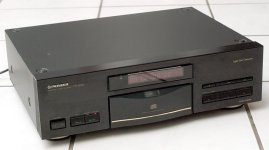I asked this question if there are some audible differences between miminalist approaches like two transistor or more in comparison with op amps. As I never had the chance to make an A/B listening test with such different disigns.
Until today its not clear for me how much difference in sound can be found in electronics.
Conservative tone studio guys claim that under blind listening tests most people cannot hear a difference they usually believe to hear (not following special test method).
I can contribute with my listening experince:
I made recordings with good equipment from some instruments (small triangle, big triangle, plastic flute, wooden xylophone, beer bottle plopped with finger) and compared them played live with the loudspeakers I built (technical nearly perfect loudspeakers - time coherent and flat frequency response and good impulse reproduction).
It was not possible to hear any difference between loudspeaker and real sound source when the loudspeakers were EQed to the point (measurement assisted).
And now the fact: I made the recordings in the beginning with a cheap zoom H1 recording machine (110 dollars).
Already with this simple recording machine the recordings were so good that only a very experienced listener could hear a difference between recording and original instument played at the same time in the listening room with the loudspeakers.
"Normal people" who are not used to make listening tests would hear no difference at all between expensive and good recording equipment worth several thousand dollars and the simple Zoom H1 machine. However this also shows that you get today decent quality at low price.
So maybe this answers the question how important electronics can be to hear differences in sound: If everything is done well, clearly the loudspeaker, the recording and the listener dominate the result. Not so much which kind of electronics you use.
Listening was done with modified Pioneer PD-S901 CD Player (digital spline filter), my fullrange onewayspeakers (20cm oneway driver with goods spatial response, low distortion and stable and resonance free driver cone, EQed to the point), and a Behringer Inuke NU3000dsp.
The good recording equipment from a friend were expensive studio microphones with self made pre-amplifiers for them and custom made AD conversion. Instruments were recorded in the near field in open air (outside).
Until today its not clear for me how much difference in sound can be found in electronics.
Conservative tone studio guys claim that under blind listening tests most people cannot hear a difference they usually believe to hear (not following special test method).
I can contribute with my listening experince:
I made recordings with good equipment from some instruments (small triangle, big triangle, plastic flute, wooden xylophone, beer bottle plopped with finger) and compared them played live with the loudspeakers I built (technical nearly perfect loudspeakers - time coherent and flat frequency response and good impulse reproduction).
It was not possible to hear any difference between loudspeaker and real sound source when the loudspeakers were EQed to the point (measurement assisted).
And now the fact: I made the recordings in the beginning with a cheap zoom H1 recording machine (110 dollars).
Already with this simple recording machine the recordings were so good that only a very experienced listener could hear a difference between recording and original instument played at the same time in the listening room with the loudspeakers.
"Normal people" who are not used to make listening tests would hear no difference at all between expensive and good recording equipment worth several thousand dollars and the simple Zoom H1 machine. However this also shows that you get today decent quality at low price.
So maybe this answers the question how important electronics can be to hear differences in sound: If everything is done well, clearly the loudspeaker, the recording and the listener dominate the result. Not so much which kind of electronics you use.
Listening was done with modified Pioneer PD-S901 CD Player (digital spline filter), my fullrange onewayspeakers (20cm oneway driver with goods spatial response, low distortion and stable and resonance free driver cone, EQed to the point), and a Behringer Inuke NU3000dsp.
The good recording equipment from a friend were expensive studio microphones with self made pre-amplifiers for them and custom made AD conversion. Instruments were recorded in the near field in open air (outside).



